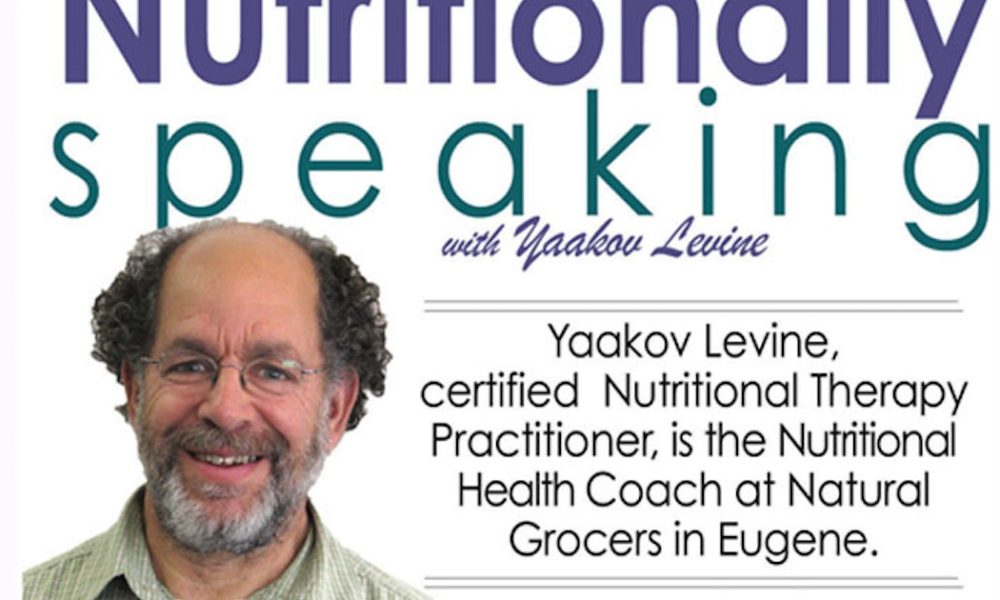
I first wrote about lutein in a column back in 2008, I had just returned from visiting with my mom in Florida. It was a hard visit. As a relatively healthy 88-year-old, she was devastated; a couple of years after being diagnosed with (AMD) macular degeneration, she had lost almost all of her central vision and could not carry on with her favorite pastimes: reading, scrabble, and of course watching Jeopardy.
Almost a year to the date of my column I was also diagnosed with this degenerative disease, except I was in my 50s, not my 80s! I thought I was doing everything right to avoid this disease, so the diagnosis pushed me towards further study. I thought there would be plenty more for me to see in my life.
Not protecting our eyes from the ravages of omnipresent blue light can lead to damage to the macula region of the retina and central vision blindness: macular degeneration. Unlike ultraviolet light (UVA and UVB), which enters our eyes and is absorbed in the front at our lens, blue light goes all the way back to the retina/macula.
Macular degeneration is a medical condition predominantly found in elderly adults in which the center of the inner lining of the eye, known as the macula area of the retina, suffers thinning, atrophy and, in some cases, bleeding. The bleeding causes scar tissue that can result in loss of central vision, causing the inability to see fine details, read or recognize faces. According to the American Academy of Ophthalmology, it is the leading cause of central vision loss (blindness) in the United States today for those over 50 – which is not ”elderly” by any means.
We do not even need to leave the house to be exposed to damaging light sources. Blue light is ever-present in our lives, from the sun and emitted from our computer monitors, flatscreen TVs, tablets and smartphones. We are also exposed to blue light from all types of ”energy efficient” fluorescent, LED and halogen lighting.
Studies have suggested that people who have diets rich in green, leafy vegetables have a lower risk of developing AMD. These foods supply the carotenoids, lutein and zeaxanthin, which form a protective light filter over the macula of the eye – sunblock for your retina. Along with green leafy vegetables, red and yellow bell peppers, egg yolks, squash, mango, papaya and corn supply these important nutrients.
What I learned the hard way was that what we get in our foods is not enough; we can all support our eye health with a daily lutein supplement, costing just a few cents a day. After adding this supplement I saw continuing improvement in my eye health and vision.
Since lutein and the other protective carotenoids are fat-soluble, a diet rich in healthy fats, such as grass-fed butter, olive oil and coconut oil, along with healthy fat digestion and assimilation is imperative. Studies show that there is a correlation between those who have had gallbladder surgery and AMD later in life. (My mother had her gallbladder removed many years before being diagnosed with AMD.) Our gallbladders store bile produced in the liver, which is released when we eat fats. The bile then helps in the digestion of the fats.
We also see a higher incidence of AMD with people who have little or no fat in their diets. In this case, the bile stored in the gallbladder becomes thick and does not flow out when needed to support fat digestion. A moderate amount of healthy fats such as animal (pasture raised), fish oil, olive oil and butter in the diet will assure we will be able to digest and assimilate the important antioxidants and other nutrients to protect our eyes.
For a snack, try an avocado or a handful of raw nuts or seeds – a great source of healthy fats to support maintaining your body’s protective antioxidant level.
Studies have found that when lutein levels are low in the eye’s macula, there is a corresponding low level of lutein in the brain, contributing to reduced cognition and short-term memory issues. Lutein is the dominant protective carotenoid in the brain, also supporting brain development in infants and toddlers, as well as an important component to protect skin from aging damage due to exposure to UV light, and those brown spots we all hate to see. Lutein is available as a one-a-day supplement, and studies show a dosage of 10 to 20 mg. per day will supplement the lutein in your diet.
As we age, we often do not produce a sufficient amount of hydrochloric acid (HCl) in our stomachs to digest proteins and protect us from bacterial or fungal overgrowths. The HCl we produce also plays a critical role in our absorption of minerals such as calcium, magnesium and zinc. A National Eye Institute study confirmed that zinc is a very important nutrient, along with lutein, for preventing AMD. Now is the time to protect your eyes with the same diligence you do your skin when you head out for summer fun.
Salud!
Any questions? I can be reached at [email protected] or at my store.







